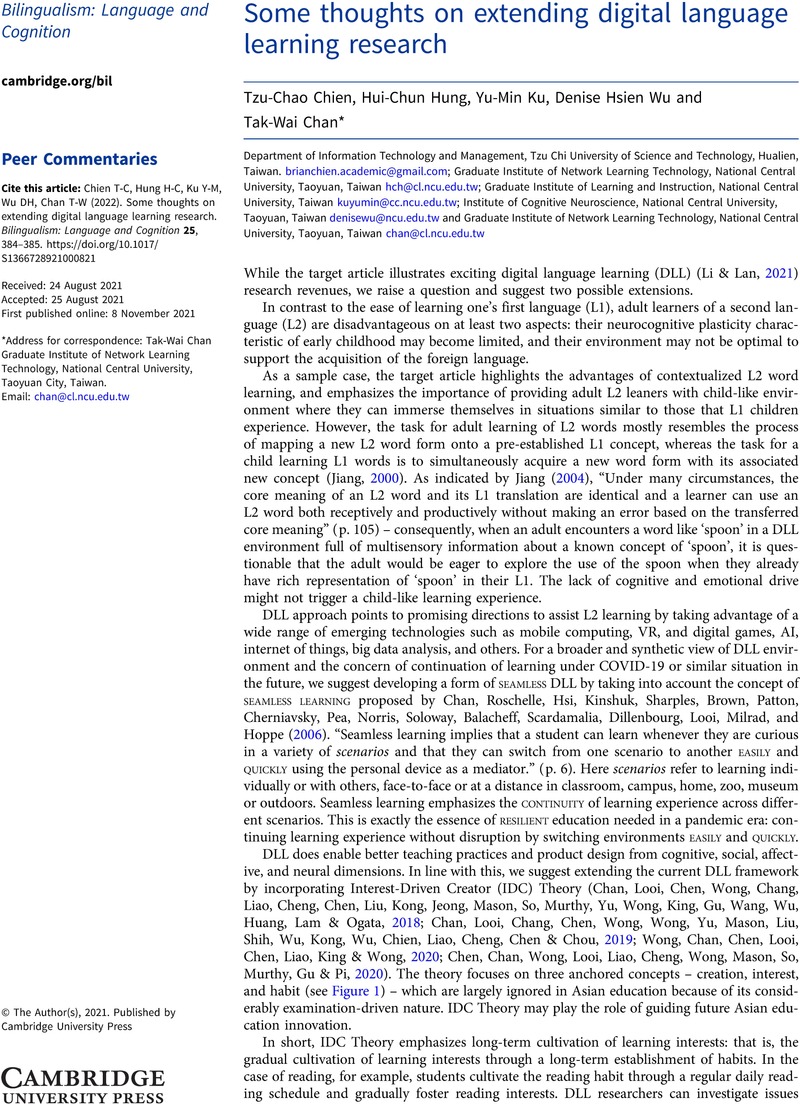Crossref Citations
This article has been cited by the following publications. This list is generated based on data provided by Crossref.
Li, Ping
and
Lan, Yu-Ju
2022.
Understanding the Interaction between Technology and the Learner: The Case of DLL.
Bilingualism: Language and Cognition,
Vol. 25,
Issue. 3,
p.
402.
Wang, Yongkang
and
Chen, Pengfei
2024.
An interest-driven creator English course for developing Chinese private college students’ listening and speaking proficiency under a blended setting.
Asian-Pacific Journal of Second and Foreign Language Education,
Vol. 9,
Issue. 1,



